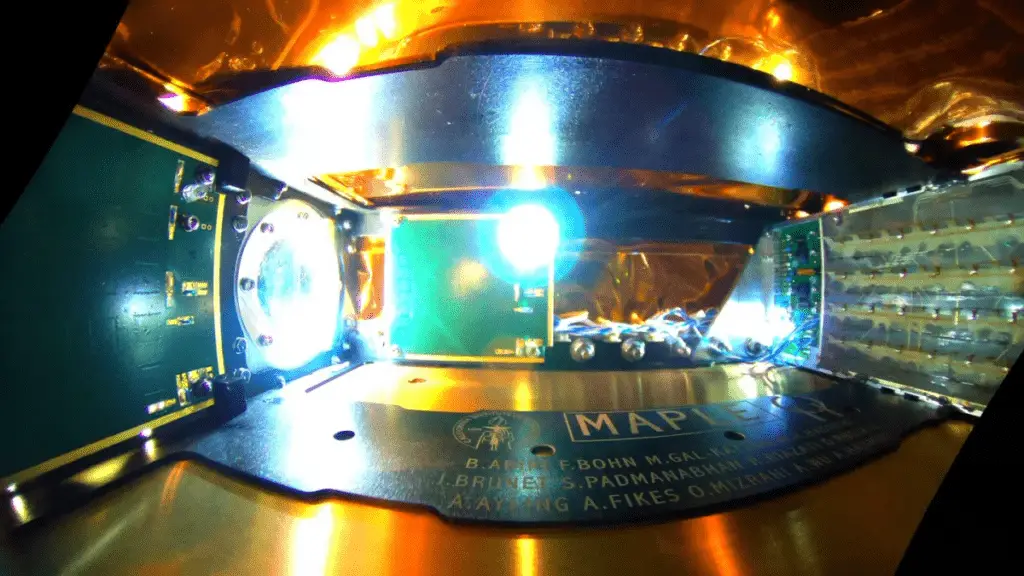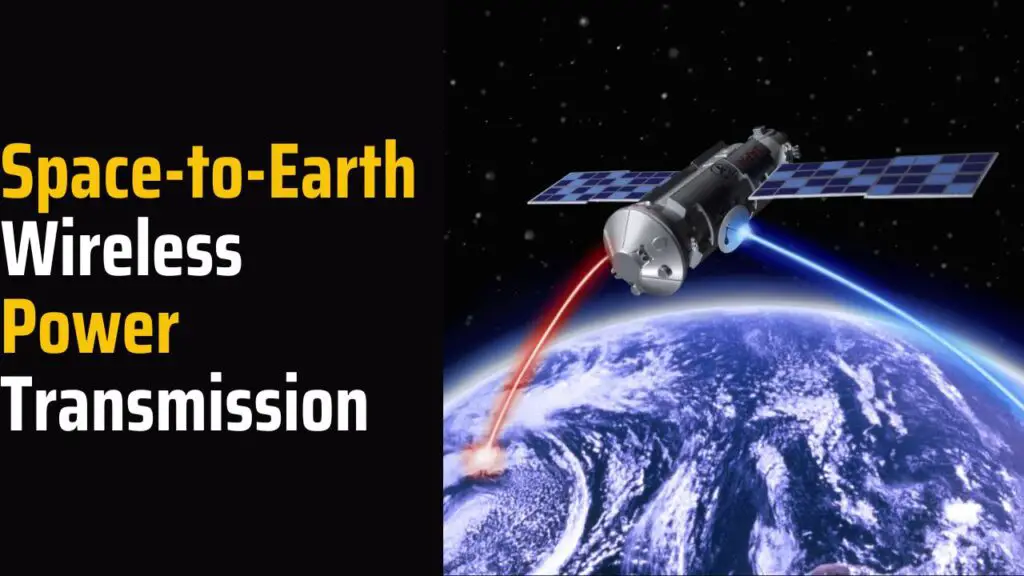In a groundbreaking achievement, scientists have successfully demonstrated the transmission of wireless power from space to Earth.
This remarkable feat brings us closer to a future where clean and sustainable energy can be harnessed on a global scale.
In this article, we will explore the significance of this achievement, the technology behind it, and the potential implications for our energy needs.
Scientists have achieved a groundbreaking milestone by successfully showcasing the wireless transmission of solar power from space to Earth.
This remarkable feat was accomplished through the Space Solar Power Project (SSPP) led by the California Institute of Technology (Caltech), which aims to harness solar energy in space and deliver it to our planet’s surface.
At the heart of this project is the space solar power prototype named Maple, an essential technology among three key technologies being tested.
Electricity from space
For the first time ever, researchers from the California Institute of Technology (Caltech) have succeeded in sending solar energy from space to Earth. They successfully tested a device called MAPLE in a unique project.
Maple, an abbreviation for Microwave Array for Power-transfer Low-orbit Experiment, features an array of flexible and lightweight microwave power transmitters constructed using custom electronic chips. These transmitters efficiently beam the harvested energy to specific destinations.
The SSPD-1 (Space Solar Power Demonstrator) space probe, which was sent into space in January, is home to the MAPLE (Microwave Array for Power-transfer Low-orbit Experiment) device, a small apparatus used for the energy transfer experiment.
What is MAPLE made of?
“MAPLE is made up of thin, flexible energy transmitters that are managed by proprietary electronic chips produced with inexpensive silicon technologies. According to the website Interesting Engineering, “the system’s flexibility permits folding after launch into orbit and the low weight lowers the fuel consumption needed to propel them into space.

The Power-transfer Microwave Array Moving parts were not necessary because of the interference between transmitters employed in the Low-orbit Experiment to change the focus and direction of energy. The scientists were subsequently able to dynamically direct the energy from the array of transmitters to the appropriate place by using the coherent summation of electromagnetic waves.
MAPLE has two receivers that take in energy and transform it into direct current at a distance of around 30 centimetres from the transmitter. The transmission of energy in space was successfully demonstrated by the researchers by turning on and switching between a pair of LEDs attached to these receivers.
Additionally, the device was able to send the obtained solar energy back to Earth via a tiny hole. A receiver on the campus of Caltech in Pasadena received this energy.
To achieve its desired objectives, the energy transmission arrays utilized in this experiment needed to possess two crucial qualities: lightweight design and flexibility.
These characteristics ensure minimal fuel requirements for space travel and enable easy folding and transportation via rockets.
The Breakthrough
The experiment, conducted by a team of researchers, involved the use of microwave technology to transmit power wirelessly from a space-based solar power station to a receiving station on Earth’s surface.
The successful transmission and subsequent conversion of the wireless energy into usable electricity mark a significant milestone in the field of renewable energy.
How Does It Work?
The concept of wireless power transmission, also known as space-based solar power, relies on the capture of solar energy in space using large solar panels.
This energy is then converted into microwave beams that can be safely transmitted through the Earth’s atmosphere without significant losses. On the receiving end, specialized antennas capture these microwave beams and convert them back into electricity, which can be used to power homes, businesses, and even entire cities.
A successful experiment
Dr. Ali Hajimiri, an Electrical Engineering professor at Caltech, expressed his excitement regarding the successful experiments conducted with Maple.
He revealed that the prototype not only transmitted power effectively to receivers in space but also had the capability to direct its energy towards Earth, a remarkable achievement.
Dr. Hajimiri emphasized the groundbreaking nature of this accomplishment, as it surpassed previous attempts using rigid and costly structures. The use of flexible lightweight structures and integrated circuits is an unprecedented advancement in wireless energy transfer.
Following rigorous testing on Earth, researchers are confident that the Maple prototype, built with materials optimized for space conditions, can withstand the journey to space and operate effectively in that environment. Although the results are yet to be published in a peer-reviewed journal, the initial findings are promising.
This innovative technology employs ultralight and highly efficient materials that efficiently convert light into electricity. Furthermore, it incorporates an integrated power conversion and transmission system, ensuring compatibility and seamless energy transfer.
By converting direct current power from sunlight into radio frequency power, similar to the signals used for cell phone transmission, Maple safely sends the energy to Earth in the form of harmless microwaves. The array includes a small window that facilitates the beaming of energy.
The transmitter array in the prototype utilizes timing-control elements to dynamically focus the power on the desired location. Although only a fraction of the transmitted energy was detected by a receiver at Caltech’s campus in Pasadena, located on the roof of the Gordon and Betty Moore Laboratory of Engineering, this outcome was anticipated due to the wide dispersion of energy as it reaches Earth’s surface.
Currently, researchers are carefully evaluating the performance of individual elements within the system. This comprehensive analysis, which may span up to six months, aims to identify and resolve any irregularities in the system, ultimately providing valuable insights for the next generation of the prototype.
Benefit of using solar energy in outer space
The utilization of solar energy in outer space offers a significant advantage over Earth-based solar panels due to its constant availability without being affected by day-night cycles, seasonal variations, or cloud cover.
Scientists estimate that solar power in space has the potential to yield eight times more energy than solar panels located on Earth.
How solar energy in outer space works?
In its full realization, the Space Solar Power Project envisions a network of modular spacecraft deployed in space, collecting sunlight and transforming it into electricity. This electricity is then converted into microwaves and transmitted over long distances to meet energy demands wherever they may arise.
Dr. Sergio Pellegrino, co-director of the SSPP, emphasizes the importance of flexible power transmission arrays in the current design, which resembles sail-like solar panels unfurling upon reaching orbit.
Dr. Hajimiri envisions wireless energy transfer as a means to democratize access to energy, drawing a parallel with how the internet democratized access to information.
This revolutionary achievement has the potential to transform the energy landscape and bring us closer to a sustainable future where energy accessibility is widespread and equitable.
Advantages and Implications of Space-to-Earth Wireless Power Transmission
The successful demonstration of wireless power transmission from space to Earth holds several advantages and potential implications for our energy landscape:
1. Clean and Renewable Energy
Space-based solar power offers a clean and renewable energy solution. Unlike traditional fossil fuels, solar energy is abundant and does not produce harmful greenhouse gas emissions or contribute to climate change.
By tapping into this vast resource, we can significantly reduce our dependence on fossil fuels and move towards a more sustainable future.
2. Global Energy Accessibility
Wireless power transmission has the potential to provide energy access to remote and underserved areas around the world.
With the ability to transmit energy wirelessly across long distances, regions with limited infrastructure or challenging terrains can benefit from reliable and clean power sources. This technology has the potential to bridge the energy gap and improve the quality of life for communities in remote locations.
3. Space Exploration and Colonization
The development of space-based solar power technology also holds promise for space exploration and colonization efforts.
As we venture further into space, the ability to harness energy from the sun and transmit it wirelessly to space colonies or spacecraft could revolutionize our capabilities in space travel and sustain long-duration missions.
4. Reduced Energy Losses
Traditional power transmission systems suffer from energy losses during distribution over long distances. With wireless power transmission, energy losses can be significantly minimized, as the microwave beams can be directed precisely to the intended receivers.
This increased efficiency translates into more energy reaching its destination, reducing waste and improving overall energy utilization.
Conclusion
The successful demonstration of wireless power transmission from space to Earth represents a monumental leap forward in harnessing solar energy.
The achievements of the Space Solar Power Project, particularly through the Maple prototype, underscore the remarkable capabilities of flexible lightweight structures and integrated circuits.
As researchers continue to refine and optimize this technology, we are poised to witness a future where clean and abundant solar power is accessible to all, transcending the boundaries of geography and opening new frontiers in renewable energy utilization.



